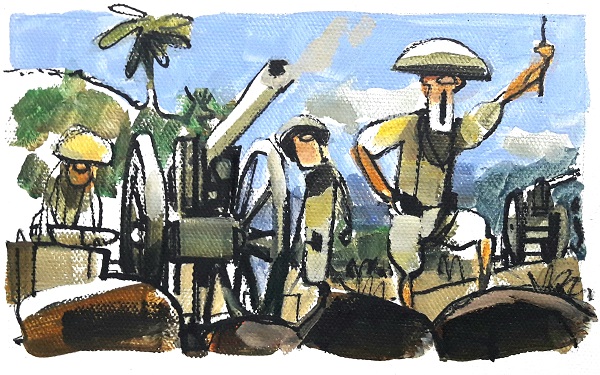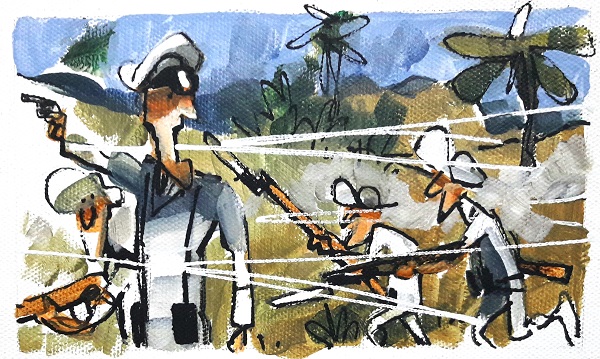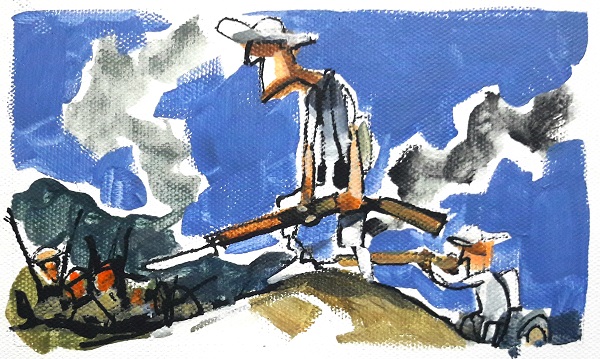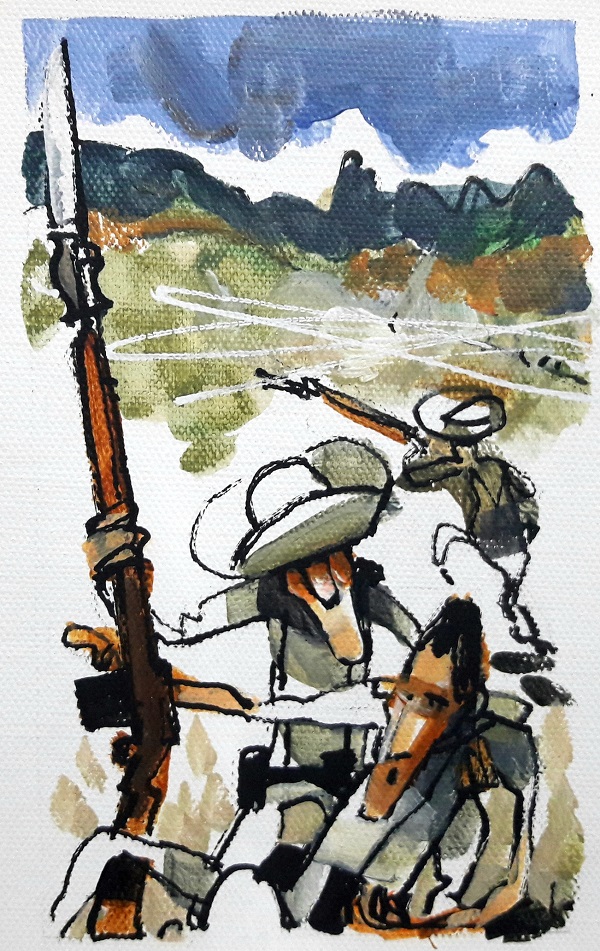- Home
- Staff
- Texto no traducido
- Las Cruces Rojas de los Últimos de Filipinas
I´ll tell you III
I’ll tell you
The Red Crosses of the ‘Last of the Philippines’
Anniversaries create trails through history which remained asleep with the old taste of all that which lies forgotten. Nobody could imagine the number of names which lie neglected but deserve to be remembered. However, no one could ignore that only literature, in its poetic or novelistic forms (or cinema) is capable of focussing this collective memory, whether or not the story is true.
The Land newspaper, on the occasion of the 120th anniversary of the heroic deed of Baler, wanted to follow the trail of a name from the war in the Philippines which was not part of the famous siege which the ‘Last Ones of the Philippines’, who were by no means the last ones there – until well into the 20th century, those who could truly be considered the last in the Philippines were still returning to Spain; but there was no film, no poem, no novel to tell their story. We cannot forget that history looks for the truth and art looks for eternity, and that they never coincide.

Amongst all the names which deserve to be recovered from their dormant life in speciality magazines and books, of which there are hundreds, our newspaper wanted – diving into the work of the writer and professor in the Infantry Academy José Luis Isabel Sánchez, The Royal and Military Order of Saint Ferdinand, edited by the Ministry of Defence in 2001 – to recover the incredible story of the first casualty from the General Academy in its first stage: his name, Luis Sans Huelin.
Having recently left the Academy in Toledo, he was second lieutenant in the 6th Expeditionary ‘Cazadores’ Battalion. On the 1st of January 1897 – a year after he arrived in the Philippines – he found himself in charge of his platoon in none other than Cacarong de Silé, the location of one of the biggest battles which the Spanish Army fought against the Tagalog insurgents.
Luis’ platoon was part of the column which was made up of 450 soldiers and was commanded by José María de Olaguer y Feliú. At dawn, they began the attack against the sheltered defences of Cacarong de Silé, and which was strongly defended by more than 2,000 entrenched enemies with eight canons.

The attack began on the first day of 1897, with unprecedented force; the defence was also disproportionate. This past, which was unravelled in quiet libraries flows back to us as we imagine Second Lieutenant Sans Huelin’s platoon climbing up whilst shooting at the enemy positions, whilst they take shelter from the hostile shrapnel with the movement, the order of combat which they have learned, and the mutual support in the advance. Now they are so close to the enemy that the wind carries to them all kinds of sounds and voices, as if they were just a stone’s throw away. The lieutenant, with the voice of a young man but determined in the attack, gives the order to set the bayonets for the final attack. In this moment he is wounded, in the shoulder, the leg and maybe the hip, he thinks. Because he cannot stand up by himself, he asks a comrade to help him stand up to continue with the attack, rallying and giving orders to his platoon.

And this is the image that will live in memory: that of a young Second Lieutenant Luis Sans Huelin supported by a comrade, who may have been a private, whose name this newspaper was unable to uncover. This comrade, who in combat held onto the injured body of his boss and, covering his injured flesh with his hands, obeys the second lieutenant’s orders so he can continue in spirit to complete the attack whilst rallying and calling his entire platoon to the bayonet, which sees how the boss, who is injured and being helped to walk by a comrade, is still carrying them into combat without faltering. Meanwhile, the defences of Cacarong de Silé continue to spew out shots, hidden inside their trenches.
They have almost reached the bayonets, when Luis takes a fatal shot to the chest and instantly drops dead. I hope that someone who reads these lines can tell us who was the soldier who carried his lieutenant to the summit of Cacarong, and if the same shots which ended Luis Sans’ life also ended his. Two brave men, one injured who asked to continue towards the attack and another who obeyed this order, when logic asked for different action to help his young second lieutenant. The platoon reaches the trenches, jumps on the enemy and with the blows from their bayonets, manages to clear them out. Everyone knows that, without the strength that their lieutenant gave them and without that colleague who, burdened with him, carried him swiftly, they would not have achieved this victory. Two facts which made this platoon from the 6th ‘Cazadores’ Expeditionary Battalion great, two men, two soldiers who together, one supported by the other, continued the attack until the end.

For his heroic behaviour, a process to see if he should be awarded the Cross of San Fernando 2nd Class, a laureate, began. He was awarded this prize by sovereign ordinance on the 18th of September 1900.
On the18th of November 1919, in the Infantry Academy in Toledo, in its Alcázar, his comrades paid homage to him, presided over by King Alfonso XIII, who unveiled a tombstone in his honour: “To the Second Lieutenant D. Luis Sans Huelin, first officer of the present Infantry Academy, who died gloriously on the battlefield. His comrades of origin. November 1919.”
Surely, Second Lieutenant Luis Sans Huelin would place next to this tombstone another, which to him would seem more important, with the name of the soldier who carried him to the top of the summit of Cacarong de Silé: “To the comrade who, obeying my orders until the end, helped me to carry my body and soul to fulfil the last mission.”
ARMY UNITS
- Araba Álava |
- Albacete |
- Alicante |
- Almería |
- Asturias |
- Ávila |
- Badajoz |
- Barcelona |
- Burgos |
- Cáceres |
- Cádiz |
- Cantabria |
- Castellón |
- Ceuta |
- Ciudad Real |
- Córdoba |
- A Coruña |
- Cuenca |
- Girona |
- Granada |
- Guadalajara |
- Gipuzkoa |
- Huelva |
- Huesca |
- Islas Baleares |
- Jaén |
- León |
- Lleida |
- Lugo |
- Madrid |
- Málaga |
- Melilla |
- Murcia |
- Navarra |
- Ourense |
- Palencia |
- Las Palmas |
- Pontevedra |
- La Rioja |
- Salamanca |
- Segovia |
- Sevilla |
- Soria |
- Tarragona |
- Santa Cruz de Tenerife |
- Teruel |
- Toledo |
- Valencia |
- Valladolid |
- Bizkaia |
- Zamora |
- Zaragoza



